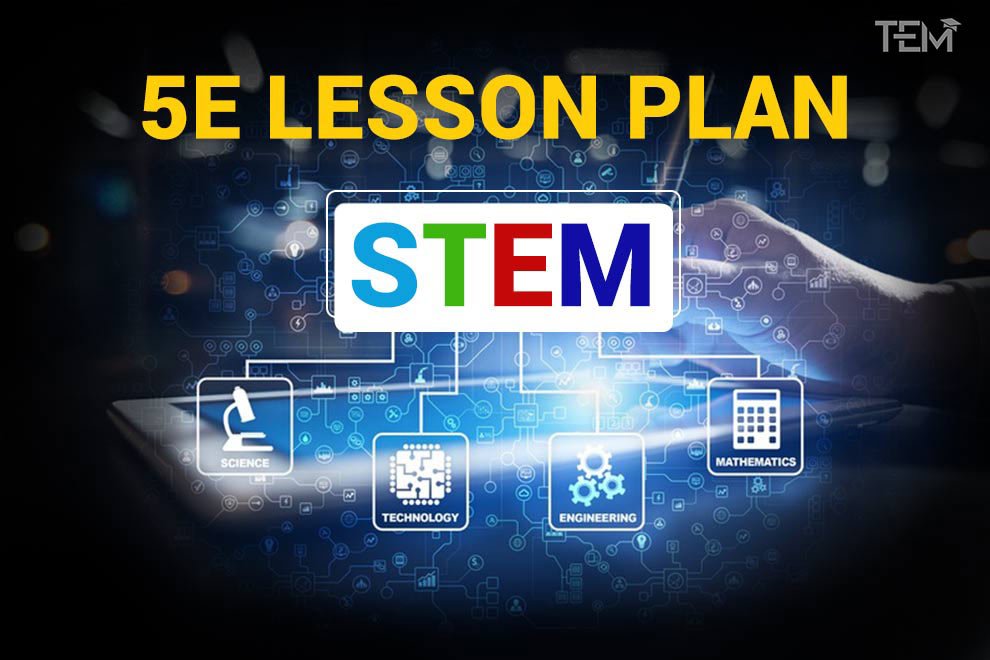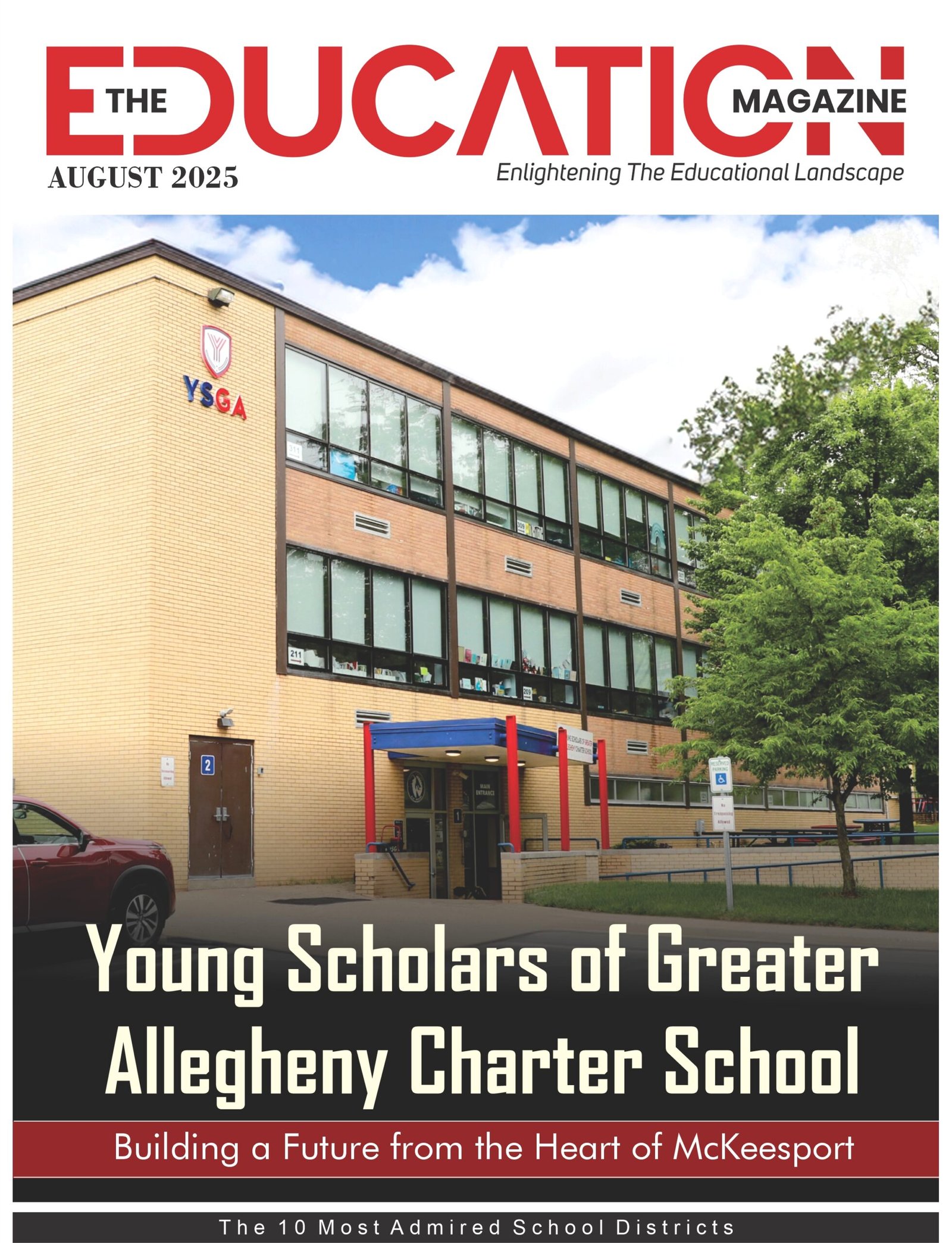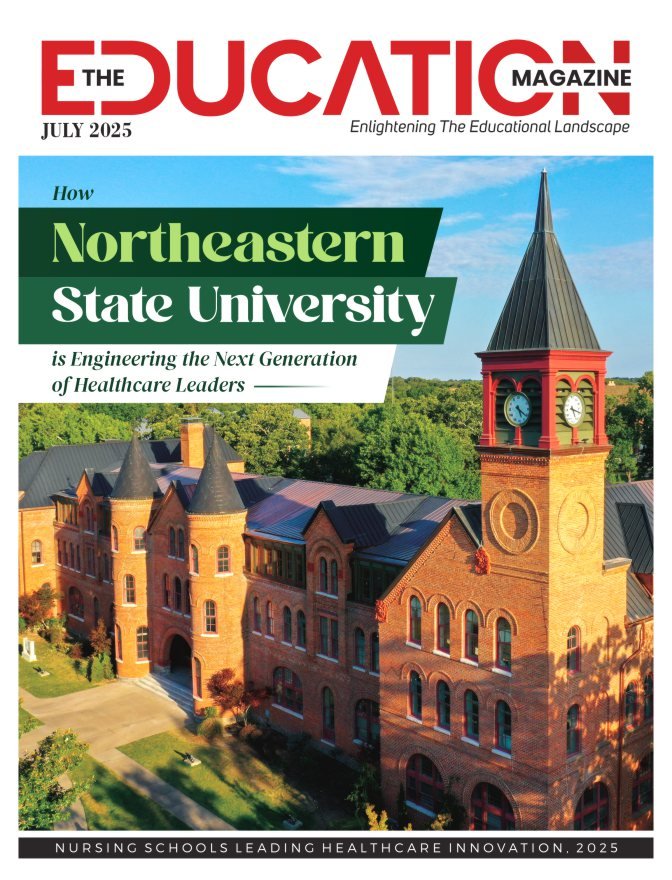Hey there, STEM educators! Are you on a mission to turn your classroom into an electrifying hub of discovery, where students don’t just learn but truly understand? We get it. The search for the perfect teaching method can feel like one giant, never-ending experiment. But what if I told you there’s a proven framework that sparks student curiosity like a chemical reaction, builds critical thinking, and gets real, measurable results? Say hello to the 5E lesson plan!
This isn’t any old lecture-style teaching. It’s an innovative model that plunges students into a thrilling, step-by-step journey of exploration, deep analysis, and real-world problem-solving. This guide is your all-access pass, packed with everything you need to confidently use the 5E lesson plan and watch your students achieve unparalleled STEM success. Let’s dive in!1.
Let’s Explore 5E Lesson Plan
1. Understanding the 5E Lesson Plan: The Foundation of Discovery
So, what’s the secret sauce behind the 5E Model of Instruction? It’s a brilliantly planned sequence of learning that puts students smack in the middle of their own educational adventure. It’s that simple and that powerful!
This amazing framework is built on five core phases: Engage, Explore, Explain, Elaborate, and Evaluate. Each ‘E’ is a critical step, ensuring students aren’t just force-fed information but are actively building their own knowledge.
Believe it or not, this game-changing idea has roots stretching back to the Biological Sciences Curriculum Study (BSCS) in the 1980s. Pretty impressive, right?
- The BSCS team cleverly adapted the learning cycle originally cooked up by J. Myron Atkin and Robert Karplus in 1962 for their Science Curriculum Improvement Study (SCIS) program.
- And this isn’t just some fad! The design of the BSCS 5E Instructional Model is backed by solid research from the National Research Council’s ‘How People Learn’ summary.
- Since the late ‘80s, BSCS has been all-in, using the 5E Model to create top-tier curriculum materials and professional development for teachers. It’s so good that multiple states have officially endorsed it for their own curriculum frameworks and assessment guidelines.
At its heart, the 5E model is pure constructivist philosophy. This just means that learners build their understanding by doing and thinking, not just by listening. Instead of being passive listeners, students get to:
- Ask questions and observe.
- Model and analyze.
- Explain and draw conclusions.
- Argue from evidence and debate ideas.
- Work together to solve problems and run investigations.
It’s about turning the classroom into a dynamic workshop of ideas!
2. The Undeniable Benefits of the 5E Model
Why are so many educators buzzing about the 5E lesson plan model? Because the benefits are simply too good to ignore! It transforms the classroom into a powerhouse of inquiry and critical thinking.
- Benefits for Students
- Deeper Understanding: Students aren’t just skimming the surface. The model guides them through fun activities and explorations, making sure they nail the basics before tackling trickier topics. This helps seal up any knowledge gaps for good!
- Sky-High Engagement: Forget zoned-out students! By kicking things off with engaging activities, students are instantly motivated to dig in and investigate. It’s active, hands-on learning that gets them thinking, not just taking notes.
- Developing Critical Thinking: The 5E model is like a workout for the brain! It encourages a scientific mindset where students explore and experiment, building problem-solving skills that they’ll use for the rest of their lives.
- Improved Retention: The learning sticks! Because the sequence is so thoughtfully planned, students absorb concepts over time through a series of connected steps, helping them truly internalize the material.
- Promotes Individuality and Personal Growth: In phases like Elaborate, students get to apply what they’ve learned in creative ways. This gives them a chance to chase their own interests, express themselves, and build a ton of confidence.
- Benefits for Teachers
- A Clear, Structured Roadmap: Say goodbye to lesson-planning headaches! The 5E model gives you a fantastic, five-phase structure (Engage, Explore, Explain, Elaborate, Evaluate) that’s super adaptable for any subject or age group.
- You’re the Facilitator, Not the Lecturer: In the 5E model, you become a guide on the side, not a sage on the stage. You empower students to steer their own learning through experiments and problem-solving. This is student-centered learning at its best!
- Formative Assessment Made Easy: The model naturally weaves in formal and informal assessments. You can see how students are doing through observations during an activity or with a quick quiz, allowing you to address any confusion right away.
- Aligns with Top Standards like NGSS: The activities in a 5E sequence are practically built to integrate Science and Engineering Practices, Crosscutting Concepts, and Disciplinary Core Ideas, making it a perfect match for frameworks like the Next Generation Science Standards (NGSS).
3. The 5E Lesson Plan Format: A Deep Dive into the Stages
Alright, let’s break down the five phases that make the 5E lesson plan framework so magical. Each one plays a unique role in creating an unforgettable learning experience.
- Engage
- Purpose:
This is the hook! The goal is to grab students’ attention, spark their curiosity, and connect the lesson to what they already know. It gets them thinking and asking those all-important ‘Why?’ questions.
- Teacher’s Role:
You set the stage. You might present a puzzling situation, identify the task, and lay out the ground rules. You guide initial discussions to uncover what students are already thinking. Your goal is to get them to ask their own questions!
- Student’s Role:
They lean in, asking questions like, ‘Why did this happen?’ or ‘What do I already know about this?’ They show their curiosity, share ideas, and maybe even create a quick model of their current understanding.
- Action Verbs & Question Stems:
- Action Verbs: Ask, show interest, express, share, create.
- Question Stems: ‘What do I already know about this?’, ‘How can this problem be solved?’
- Example Activities:
- Interactive Question: Kick off with something like, ‘What happens if we mix these two substances?’
- Multimedia Clip: A short, engaging video can set the scene perfectly.
- Mystery Box: Fill a box with lesson-related objects and have students guess what’s inside.
- KWL Chart: Students brainstorm what they know, want to know, and later, what they Learned.
- Explore
- Purpose:
Time to get their hands dirty! In this phase, students dive into activities to investigate the topic and make their own discoveries. They’re asking questions, spotting patterns, and testing ideas.
- Teacher’s Role:
You’re the coach! You kick off the activities and then step back, giving students time to investigate. You ask probing questions to help them make sense of what they’re seeing and guide them as they record data.
- Student’s Role:
They’re the scientists! They test predictions, form new hypotheses, and discuss problems with their peers. They’re trying different ways to solve a problem and comparing their ideas with others.
- Action Verbs & Question Stems:
- Action Verbs: Test, plan, conduct, observe, record, compare.
- Question Stems: ‘What are other ways you could represent this information?’, ‘Why is it important to consider multiple ways to solve a problem?’
- Example Activities:
- Group Work: Have students team up for experiments.
- Science Experiment: Let them test materials to see which is the best insulator.
- Exploration Stations: Set up different stations with hands-on activities or simulations.
- Role-Playing: Students act out scenarios to explore concepts in a practical way.
- Explain
- Purpose:
This is the ‘Aha!’ moment. After exploring, students share what they’ve found, and the teacher helps connect their discoveries to formal scientific concepts and vocabulary. It’s all about clarifying and solidifying their understanding.
- Teacher’s Role:
You help connect the dots. You ask students to share their findings and then provide formal definitions and explanations through mini-lectures or other resources. You encourage them to explain concepts in their own words and back it up with evidence.
- Student’s Role:
They become the teachers! They show their models and explanations to the class. They listen to others, ask questions, and start using formal scientific language. They compare their new understanding with what they thought before.
- Action Verbs & Question Stems:
- Action Verbs: Share, listen, explain, use, compare, adjust.
- Question Stems: ‘Why do you think…?’, ‘What evidence do you have?’
- Example Activities:
- Discussions: Lead a class discussion where students share their findings.
- Direct Instruction: Use a cool demonstration to explain a scientific principle.
- Interactive Whiteboard: Let students build and explain ideas together on a digital whiteboard.
- Think-Pair-Share: Students discuss a problem using new vocabulary, then share with the class.
- Elaborate
- Purpose:
Now it’s time to stretch their thinking! This phase challenges students to apply what they’ve learned to new situations, which deepens their understanding and builds critical thinking skills.
- Teacher’s Role:
You challenge them. You expect students to use the new vocabulary and concepts in different contexts. You ask questions that push them to draw reasonable conclusions from the evidence.
- Student’s Role:
They’re innovators! They apply their new skills to solve different problems or design experiments. They make connections between what they just learned and what they already knew.
- Action Verbs & Question Stems:
- Action Verbs: Apply, design, draw conclusions, make connections, communicate.
- Question Stems: ‘When looking at the package, what can we use to determine the number of items inside?’
- Example Activities:
- Projects: Assign a project that requires students to use their new knowledge creatively.
- Design Challenge: Have students design a prototype to solve a problem.
- Case Studies: Analyze real-world examples, like studying sustainable energy practices.
- Choice Board: Offer options like writing a monologue or creating a visual representation of a concept.
- Evaluate
- Purpose:
The final check-in. This phase is all about assessing what students have learned. It gives students a chance to reflect on their progress and lets the teacher see if the learning goals were met.
- Teacher’s Role:
You’re the assessor. You might use a summative evaluation, observe students as they demonstrate their skills, and use a variety of tools to gather evidence of their understanding. You also give them a chance to assess themselves.
- Student’s Role:
They reflect and demonstrate. They give feedback to their peers and evaluate their own knowledge. They might check their work with a rubric, ask deeper questions, and show what they’ve learned about the core ideas and practices.
- Action Verbs & Question Stems:
- Action Verbs: Give feedback, evaluate, check, assess, demonstrate.
- Question Stems: ‘What did you do while learning this lesson?’, ‘How did you feel?’
- Example Activities:
- Formative Assessments: Use exit tickets or quick quizzes.
- Project Presentation: Students present their projects and explain their process.
- Reflection Activity: Ask students to write about their learning journey.
- Self-Assessment and Peer Review: Students use a rubric to assess their own work and give feedback to classmates.
4. 5E Lesson Plan Stages Summary Table
Here’s a handy table that puts it all together at a glance!
| Phase | Purpose | Teacher’s Role | Student’s Role |
| Engage | Spark interest, connect to prior knowledge, and get students thinking. | Presents a situation, sets the task, and structures discussions to reveal student ideas. | Asks questions, shows curiosity, shares observations, and expresses current understanding. |
| Explore | Allow students to investigate the topic through hands-on, concrete experiences. | Facilitates learning, initiates activities, allows time to investigate, and asks probing questions. | Tests predictions, plans, and conducts investigations, records data, and compares ideas. |
| Explain | Clarify student understanding, introduce scientific concepts, and formalize learning. | Asks students to share findings, provides formal definitions, and asks for justification. | Shows models, listens critically, explains using evidence, uses formal language, and adjusts ideas. |
| Elaborate | Encourage students to extend their learning by applying concepts in new contexts. | Expects use of new vocabulary, encourages application, and asks questions for drawing conclusions. | Applies new skills, proposes solutions, draws conclusions, and makes conceptual connections. |
| Evaluate | Assess student understanding and skills, allowing for reflection and evaluation of progress. | Administers assessments, observes student understanding, and provides opportunities for self-assessment. | Gives feedback, evaluates their own progress, checks work with rubrics, and demonstrates understanding. |
5. 5E Lesson Plan: Tailored for STEM Success
One of the most incredible things about the 5E instructional model is how incredibly adaptable it is. It’s a powerhouse for any STEM field, providing a clear path for students to build knowledge step-by-step.
- 5E in Science
This is a natural fit! The 5E model perfectly mirrors the scientific method by championing inquiry and hands-on investigation.
- Engage: Introduce a mind-boggling scientific phenomenon to spark curiosity.
- Explore: Students conduct experiments and collect data, just like real scientists.
- Explain: They present their findings, and the teacher introduces formal scientific terms.
- Elaborate: Students apply their knowledge to solve new scientific problems.
- Evaluate: You assess their grasp of the concepts and their scientific skills.
- For example, a lesson on the water cycle becomes an adventure! Or you could use a ‘magic’ trick with static electricity to Engage students right from the start. How cool is that?
- 5E in Technology & Engineering
The 5E model pairs beautifully with the Engineering Design Process (EDP).
- Engage: Introduce a real-world engineering problem that needs a solution.
- Explore: Students brainstorm ideas and prototype initial designs (the ‘imagine’ and ‘plan’ stages of EDP).
- Explain: They present their designs, and the teacher provides feedback and key engineering principles.
- Elaborate: Students build, test, and refine their prototypes, putting engineering skills into practice.
- Evaluate: You assess the final design and their problem-solving journey.
- For example, students could design solutions based on specific criteria you introduce during the Explain phase.
- 5E in Mathematics
Think the 5E model is just for science? Think again! It’s fantastic for math because it promotes deep conceptual understanding over boring rote memorization.
Concrete Example: Discovering the Area of a Rectangle vs. Memorizing the Formula
- Engage: Forget just slapping the formula A=lw on the board! Ask students to figure out how to measure the space inside different rectangular objects in the room. Ask, ‘How can we compare the ‘bigness’ of this desk to that table?’ Show a quick video of tiling a floor or painting a wall.
- Explore: Give students square tiles and rectangular cutouts. In groups, they cover the rectangles with tiles, counting the tiles along the length and width, and the total. They’ll start to see a pattern!
- Explain: Groups share what they found. You then formally introduce the terms ‘length,’ ‘width,’ ‘area,’ and the formula A=lw, connecting it directly to their hands-on discovery.
- Elaborate: Students use their new knowledge to solve real-world problems, like figuring out how much carpet a room needs or designing a playground with a specific area.
- Evaluate: A quick quiz on calculating area, or even having them draw and explain how to find the area of their own shapes. You can also assess their participation and how they applied the formula.
6. Sample 5E Plans & Science Examples
The 5E Model of Instruction provides that perfect, carefully planned sequence that puts students right at the heart of their learning. Here’s how it looks in action.
- Download Your Free 5E Lesson Plan Template
To make your life easier, we’ve created a comprehensive, fillable 5E Lesson Plan template for you! It’s available in both PDF and an editable Google Doc format. This template walks you through each stage, with clear prompts to help you design amazing activities for any subject. It includes space for objectives, materials, and even differentiation strategies to ensure every student succeeds. This resource is a total time-saver!
- Detailed Lesson Plan Examples
Here are some high-quality, mini-lesson plan summaries showing the 5E model in action.
- Elementary – Plant Life Cycles
- Engage: Start with a captivating video of a plant’s life cycle. Or, show different seeds and ask, ‘What do you think will grow from these?’ Use a KWL chart to tap into their prior knowledge.
- Explore: Students plant seeds in clear cups and record their observations in a science journal over several days, drawing what they see.
- Explain: The teacher introduces the formal stages (seed, sprout, etc.), connecting the new vocabulary directly to what the students observed.
- Elaborate: Students create a poster or digital presentation illustrating the entire life cycle. They could even research different plants to compare.
- Evaluate: An exit ticket where students draw and label the stages. You can also observe their participation throughout the lesson.
- Middle School – Density
- Engage: Show a mix of objects (a big log, a small rock) and have students predict which will float or sink. This is a great way to uncover common misconceptions!
- Explore: In groups, students use a balance scale and a graduated cylinder to measure the mass and volume of various objects and calculate their density. They look for patterns in their data. This is perfect for chemistry 5E lesson plans!
- Explain: Students share their data. The teacher then formally defines density (ρ=Vm) and uses visuals to explain particle arrangement.
- Elaborate: Students tackle real-world problems. They could analyze an oil spill or have a design challenge to build an aluminum foil boat that holds the most marbles.
- Evaluate: A short quiz on density calculations and a conceptual exit ticket where they explain density in their own words.
- High School – Chemical Reactions
- Engage: Show a video of a dramatic chemical reaction, like the ‘elephant toothpaste’ experiment, and ask, ‘What’s happening at the molecular level?’
- Explore: Students conduct safe lab experiments, like mixing baking soda and vinegar, and carefully record evidence of chemical change (gas, heat, color change). They can also explore different reaction types, like the synthesis of magnesium oxide.
- Explain: Now for the big reveal! Students share their lab notes and discuss the evidence of chemical reactions they witnessed. This is your cue as the teacher to introduce the core concepts: reactants and products, the law of conservation of mass, and the main types of chemical reactions (synthesis, decomposition, single displacement, double displacement, combustion). You’ll show them how to write and balance simple chemical equations, using the evidence from their own experiments as the perfect examples.
- Elaborate: Time to connect to the real world! Students apply their new knowledge by analyzing everyday chemical reactions like rusting, digestion, or how a car engine works. You might challenge them to balance more complex chemical equations or predict the products of a given reaction.
- Evaluate: Students can take a quiz that asks them to identify reaction types, balance equations, and explain the law of conservation of mass using their lab data. You can also assess their understanding through their participation in class discussions.
7. Mastering the 5E Model: Expert Tips & Common Pitfalls
Ready to become a 5E pro? Implementing this model effectively can truly be a game-changer for your students. But, like any masterpiece, it takes a bit of planning and knowing what hurdles to look out for.
- Pro-Tips for Flawless Execution
- Getting the Pacing Just Right: While the 5E model gives you a fantastic structure, remember that flexibility is your superpower! The model works best when stretched over a learning sequence of two to three weeks, with each phase forming the basis for one or more lessons. Trying to cram all 5 Es into a single lesson can rush the process and rob students of deep, meaningful learning. Feel free to repeat or loop back to certain phases if students need more time to explore a concept. If an activity isn’t landing, be ready to adapt on the fly to keep the engagement high!
- The Art of Questioning: Your questions are the key that unlocks student inquiry and reflection. This is central to the 5E model!
- In Engage, pose intriguing questions that spark genuine curiosity.
- During Explore, use probing questions to help students make sense of what they’re doing and guide them if they get stuck.
- In the Explain phase, encourage students to use their own words and always ask for their evidence.
- For evaluation, use open-ended questions like, ‘Why do you think…?’ or ‘What evidence do you have?’ to truly assess their understanding.
- Differentiation is Built-In! One of the most beautiful things about the 5E model is how easily you can adapt it to meet every student’s needs—whether they need extra support, are language learners, or are ready for a bigger challenge.
- For Struggling Learners:
- Engage: Use more direct prompts and lots of visuals to get their brains warmed up.
- Explore: Offer more structured activities with clear, step-by-step instructions. Thoughtfully grouping them with supportive peers works wonders.
- Explain: Use simpler language, provide graphic organizers for notes, or offer quick mini-lessons on background concepts.
- Elaborate: Give them partially completed models or a smaller set of choices for application tasks.
- Evaluate: Use a rubric with super-clear expectations, let them give oral answers, or provide sentence starters for written work.
- For Advanced Learners:
- Engage: Encourage them to ask deeper questions or connect the topic to complex, real-world issues.
- Explore: Let them loose with more open-ended investigations or extra variables to test.
- Explain: Challenge them to synthesize info from multiple sources or even teach a concept to a peer.
- Elaborate: Assign advanced projects, encourage them to research related topics, or present them with complex case studies.
- Evaluate: Give them opportunities for in-depth analysis, design challenges, or even presentations to a bigger audience.
- For English Language Learners (ELLs):
- Engage: Use visuals, real objects (realia), gestures, and pre-teach the most important vocabulary.
- Explore: Focus on hands-on activities that don’t rely heavily on words. Pair them up with English-proficient peers for support.
- Explain: Offer visual dictionaries and sentence frames. Let them explain in their native language if possible!
- Elaborate: Use graphic organizers and allow them to show their understanding with drawings or models instead of just words.
- Evaluate: Use different assessment formats beyond written tests, like oral presentations or labeled diagrams.
- Common Pitfalls to Avoid
- The ‘Disconnected Engage’:
We’ve all seen it—a fun hook that doesn’t actually connect to the lesson’s core goal. It’s entertaining but doesn’t set the stage for deep learning. The Fix: Make sure your hook is directly related to the problem students will be investigating. If they lack background knowledge, use the Engage activity to build that foundation first.
- Explaining Too Soon:
It’s so tempting to jump in and give the answers! But explaining concepts before students have had a chance to explore undermines the whole point of the model. The Fix: Let them grapple! Let them make their own initial observations during Explore before you step in. Resist giving answers; ask more probing questions instead.
- Elaborate as Mere Practice:
If your Elaborate phase is just a worksheet with more of the same problems, you’re missing a huge opportunity. The Fix: Design Elaborate activities that challenge students to apply concepts in totally new situations, solve novel problems, or connect their learning to the real world.
- Skipping or Rushing Evaluate:
Sometimes, evaluation becomes a single test at the very end. This neglects the ongoing nature of assessment. The Fix: Weave both formative and summative assessments throughout the entire sequence. Use informal observations and quick checks in every single phase to see how students are doing and adjust your teaching accordingly.
8. Advanced Topics & FAQs
Feeling confident? Let’s tackle some advanced questions you might have.
- 5E vs. 7E Model: Which One is Right for Me?
You might have heard of the 7E model and wondered what the difference is. Here’s the scoop:
- The 5E model has been the gold standard in BSCS programs since the late 1980s. Its five phases are Engage, Explore, Explain, Elaborate, and Evaluate. It’s fantastic for introducing new topics or digging deeper into concepts, all while keeping the student at the center.
- The 7E model is an expansion that adds two more Es: ‘Elicit’ and ‘Extend.’
- Elicit comes before Engage and focuses on drawing out students’ prior knowledge and misconceptions.
- Extend comes after Evaluate and encourages students to transfer their new knowledge to even broader contexts.
So, which is right for you?
- If you’re newer to inquiry-based teaching or working with a tight timeline, the 5E model is a robust, powerful, and totally manageable framework.
- If you’re an experienced 5E user and want to deepen metacognition and knowledge transfer, the 7E model offers some amazing enhancements.
- How Do I Effectively Assess Learning Throughout the 5Es?
The key is formative assessment—the daily work of checking for understanding. It’s often informal, like listening to discussions or making quick observational notes.
- Throughout all phases: Keep observing! Jot down notes as you see students demonstrate their skills and understanding.
- Engage: Listen to their initial ideas and questions to spot prior knowledge and misconceptions right away.
- Explore: Observe how students interact, problem-solve, and collect data. This gives you a window into their thinking process.
- Explain: Ask for justification. Use quick exit tickets to see if they’re really ‘getting it.’
- Elaborate: See how well they apply concepts to new problems. Project-based assessments are great here.
- Evaluate: This is your chance for a more formal assessment. Use quizzes, open-ended questions, or projects. Don’t forget self-assessment and peer review with rubrics—they empower students to own their learning! Using formative e-assessment tools can also really boost comprehension.
- What are the Best Digital Tools for Each Stage of the 5E Model?
Let’s power up your 5E lessons with some awesome tech!
- Engage:
- Kahoot!/Quizizz: For fun, interactive polls to get things started.
- YouTube/Ted-Ed: For showing captivating videos that hook them in.
- Padlet/Jamboard: For collaborative brainstorming where everyone can share ideas.
- Explore:
- PhET Interactive Simulations: Amazing virtual labs for science and math.
- Google Earth/ArcGIS Online: To explore real-world data and phenomena.
- Flipgrid: For students to record and share their observations.
- Explain:
- Nearpod/Pear Deck: For interactive presentations that check for understanding in real-time.
- Coggle/MindMeister/Xmind: Concept mapping tools to help students visualize connections.
- Screencastify/Loom: For you to create quick video lessons that students can re-watch.
- Elaborate:
- Tinkercad/Scratch: For students to design and create digital models or simulations.
- Google Sites/Canva: For creating beautiful digital portfolios or project presentations.
- G Suite (Docs, Slides, Sheets): The classic toolkit for collaborative projects and data analysis.
- Evaluate:
- Google Forms/Microsoft Forms: For quick quizzes, exit tickets, or self-assessments.
- ClassDojo/Remind: For sending quick feedback and sharing observation notes.
- Digital Rubrics: For easy self-assessment and peer reviews.
- How Does the 5E Model Support Classroom Management?
This is one of the best-kept secrets! The 5E model is a classroom management dream because it builds in the very things that prevent off-task behavior.
- Engagement Reduces Disruptions: When kids are genuinely curious and busy investigating, they don’t have time to be disruptive. Simple as that.
- Clear Structure and Expectations: The predictable sequence helps students know exactly what’s expected of them in each phase, which cuts down on confusion.
- Student Ownership: When students feel like they are in charge of their own learning, their motivation skyrockets, and they manage themselves better.
- Collaborative Learning: Group work creates positive peer pressure and accountability. Students work together to reach a goal, keeping everyone on track.
- Real-time Feedback: Because you’re constantly checking for understanding, you can address any confusion or disengagement before it snowballs into a bigger problem.
My Opinion
Well, I can tell you the 5E lesson plan isn’t just a trend—it’s a revolution in how we approach learning. Its true brilliance lies in its simplicity and its profound respect for the learner. It shifts the classroom from a place of passive reception to a dynamic arena of inquiry and discovery.
The model doesn’t just teach students what to think; it teaches them how to think. It builds confidence, fosters genuine curiosity, and equips them with the problem-solving skills they’ll need long after they’ve left our classrooms.
The 5E lesson plan is more than a framework; it’s a philosophy that empowers both students and teachers to be lifelong learners. That’s super-impressive! Isn’t it?
Here Are Some Future Impacts of the 5E Lesson Plan Journey
The ripple effects of the 5E model go far beyond the classroom. Here are some impacts we can all learn from its innovative journey:
- Cultivates Lifelong Innovators:
The inquiry-based mindset it builds isn’t just for STEM. It prepares students to tackle any challenge in life, from managing personal finances to solving complex community problems.
- Boosts ‘Intellectual Humility’:
In a world full of strong opinions, the 5E model teaches students to question their own assumptions (Engage/Explore) and change their minds based on evidence (Explain)—a priceless skill.
- Redefines the Concept of Failure:
The Explore and Elaborate stages beautifully reframe ‘getting it wrong’ as a vital, exciting part of the discovery process, building resilience and a powerful growth mindset.
- Enhances True Collaborative Intelligence:
The emphasis on group work prepares students for the modern world, where success hinges on brilliant teamwork, not just isolated genius.
- Builds 21st-Century Literacy Skills:
As students research, evaluate sources, and present their findings, they naturally develop the critical digital and media literacy skills essential for navigating today’s information landscape.
Did this guide spark your curiosity? Feeling excited to bring the 5E model to your classroom? Share this post with your fellow educators and friends, and let’s start a STEM education revolution together!











